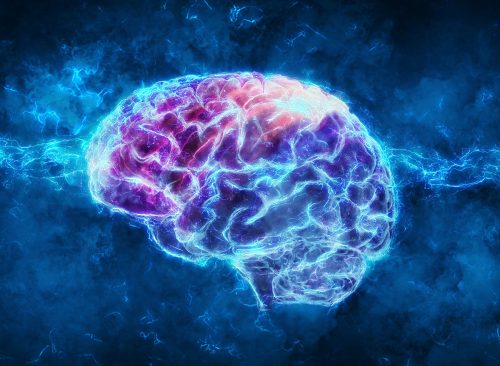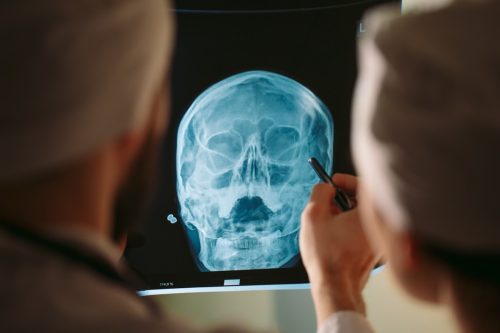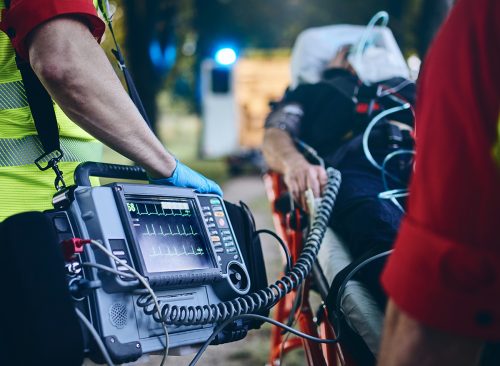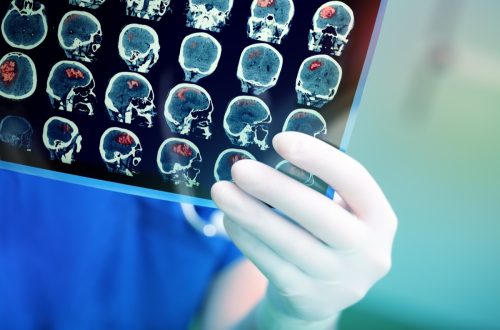What Happens to the Brain After Death? Science Reveals 7 Key Insights
"Dying is an incredibly active process in the brain."

What happens to the brain after death has been one of the most compelling mysteries of science, stoked by reports of people who've gone through near-death experiences and reported seeing the mysterious "white light" and faces of previously departed loved ones, as well as studies that suggest the visions experienced in the last minutes and seconds of life have biological explanations, including the terminally declining supply of oxygen to the brain.
New research goes even further, suggesting a surprising activity level in dying brains, which might explain why people with dementia experience a sudden burst of lucidity before death, Scientific American reported this week. "As more resources are devoted to the study of death, it is becoming increasingly clear that dying is not the simple dimming of one's internal light of awareness but rather an incredibly active process in the brain," writes Jordan Kinard. These are seven of the key insights suggested by the latest studies.
1
A Surge in Brain Activity After Cardiac Arrest

"Research over the past decade has demonstrated a surge in brain activity in human and animal subjects undergoing cardiac arrest," Scientific American reports. One study analyzed 500 critically ill people who were receiving CPR. The patients were exposed to audiovisual stimuli while undergoing CPR. One in five survivors reported having lucid experiences after their heart stopped.
Researchers also observed spikes in brain activity also spiked during CPR. "Within 20 seconds of cardiac arrest, the brain flatlines," said Sam Parnia, a critical care physician at NYU Langone Health. Yet "usually within five minutes—but it could be longer—we're seeing a reemergence of a transient period of brain electricity."
2
Activity Surge Involves a Provocative Region of the Brain

In another study published in Proceedings of the National Academy of Sciences in May, researchers noted two out of four comatose people who were undergoing cardiac arrest experienced a surge in brain activity after being removed from life support.
The study built on animal research found that gamma-wave activity surges within the first few minutes of cardiac arrest. Gamma waves are a type of brain wave associated with wakefulness, alertness, and memory.
3
An Explanation for Out-of-Body Experiences?

The surge of gamma waves in the dying study subjects was particularly intense in a brain region near the back of the skull, an area some scientists think is essential to conscious experience.
Those parts of the brain are also related to sight, hearing, and motion perception. A surge in activity in that region might explain the "out-of-body experiences" reported by people who come close to death but recover.
4
"Terminal Lucidity" More Common Than Rare

"For decades, researchers, hospice caregivers, and stunned family members have watched with awe as people with Alzheimer's or other forms of dementia suddenly regain their memories and personalities just before death," Scientific American reports. Patients might seem to recover some of "their old self," recalling memories, relationships, or inside jokes that has previously seemed lost.
This "terminal lucidity" is welcomed by family members but often signals to medical professionals that the end is near. Studies have found that these episodes of lucidity are more common than not among people with dementia. "It's almost like they're preparing themselves to die," said Parnia.
5
What Causes "Terminal Lucidity"

Scientists aren't sure. "We don't actually know what's going on in the brain during the dying process that may in some way connect to these episodes," said George Mason University's Andrew Peterson, a researcher of bioethics and consciousness who co-authored a study of terminal lucidity commissioned by the National Institutes of Health.
Further research could help heal the diseased brains of the living. Terminal lucidity "suggests there may be neural networks that are remaining, and/or pathways and neural function, that could help potentially restore cognitive abilities to individuals we otherwise think are permanently impaired," said Peterson.
RELATED: What Happens Seconds Before You Die: "Light at the End of the Tunnel" Phenomenon Explained in New Scientific Discovery
6
A Last Gasp Attempt at Survival?

In both human and animal studies, the subjects' brains showed a spike in activity after the sudden reduction of oxygen supply. It might be caused by the brain trying to reset itself to equilibrium after detecting a lack of oxygen. That attempt at survival might explain the other cognitive changes near death.
"I believe dementia patients' terminal lucidity may be due to these kinds of last-ditch efforts of the brain" to preserve itself as physiological systems fail, said Jimo Borjigin, a neurologist and an associate professor of molecular and integrative physiology at the University of Michigan, in Scientific American.
RELATED: Did the Chicken or the Egg Come First? Scientists Have a New Theory
7
Dying Brain Seems to Loosen the Brakes

Parnia believes the dying brain loses the controls that allow us to focus during our day-to-day lives. "When you die, your brain is deprived of oxygen and nutrients, so it shuts down," he said. "This shutting down process takes away the brakes," he added. "And suddenly what seems to be happening is: it gives you access to parts of your brain that you normally can't access… All your thoughts or your memories or your interactions with everyone else come out."














